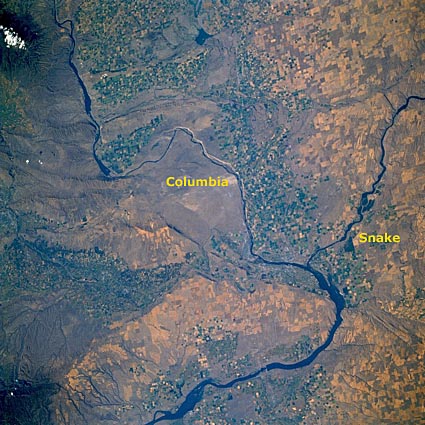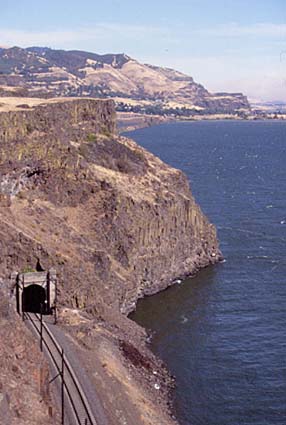|

The confluence of the Columbia with the Snake, its main tributary. |
|
Location: 46N 120W (USA/Canada); length: 2000 kilometres (1400 miles); drainage basin: 700,000 square kilometres (250,000 square miles). The Columbia-Snake river system is one of the largest river systems in north west North America. Its headwaters are in Canada's British Columbia, from whence it flows south until it meets its main tributary, the Snake River. The Snake has its headwaters on the western slopes of the Rocky mountains in Wyoming. The Snake flows on a great arc, first south, then west, then north. Downstream of the confluence of the two rivers, the Columbia flows west to the Pacific Ocean near Portland, Oregon. In Idaho, Oregon and Washington, the Columbia and Snake cut into enormously thick layers of black basalt rock, clearly seen in the Columbia Gorge, formed where the Columbia flows through the Cascade mountains. The Columbia River (named after the ship Columbia, captained by Robert gray) was first seen by Europeans in 1792. The route of the river was explored more thoroughly by Lewis and Clarke in 1805 who found that it provided a way of getting through the Cascade Mountains. It soon became one of the early trade routes. Since this time it has been improved for navigation, while a series of dams allow the river to be used to generate hydroelectric power. The river now provides a third of all HEP generated in the U.S. Its headwaters are used to store water for power and irrigation. The Grand Coulee Dam, is one of the world's largest. 
The Columbia cutting through sheets of lava rock. |